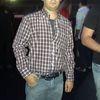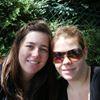Explore all the information on
Dairy cattle health
Welcome to the page about Dairy cattle health of Engormix; a source of knowledge on Dairy cattle health.
...
Comments : 0
Recommendations: 0
Our solutions and programmes boost milk production and quality throughout the lactation cycle by prompting a better utilisation of nutrients. As a result, we help to ensure dairy farms are profitable and sustainable....
Comments : 0
Recommendations: 1
INTRODUCTION Despite the growing concern for animal welfare, pain control in farm animals is still neglected (CANOZZI et al., 2020; HEWSON et al., 2007; HUXLEY & WHAY, 2006; LORENA et al., 2013). Until recently, this was partly due to the lack of precise instruments to assess pain (DOCKWEILER et al., 2013). In cattle, several zootechnical practices culminate in acute perioperative pain that can become chronic or neuropathic if preventive measures are not taken. The most...
Comments : 0
Recommendations: 0
The most common management diseases that occur during the transition period of cows include lameness, mastitis, residual placenta, metritis, ketosis, hypocalcemia (milk fever) and displacement of teats to the left....
Comments : 0
Recommendations: 0


Mepron® - The best Methionine source for ruminants shows excellent handling properties
Suggested link
Increasing the level of nutrition provided to dairy calves in the first weeks of life has resulted in several benefits such as decreased morbidity and mortality, faster recovery from disease, decreased age at first calving, improved mammary development, and increased milk production as an adult. What causes abomasal...
Comments : 0
Recommendations: 0
NiaShure™ is rumen-protected niacin that helps lower internal body temperature; protecting milk production and reproductive performance during the hot summer months. ...
Comments : 1
Recommendations: 2
Wenli Li (US Dairy Forage Research Center) gives a talk on ruminal acidosis and its effect on the microbial community in the liver, during the Symposium on Gut Health in St. Louis, USA....
Comments : 0
Recommendations: 1
Carl Yeoman (Montana State University) talks about gastrointestinal microbiota of wild ruminant species, during the Symposium on Gut Health in St. Louis, USA....
Comments : 0
Recommendations: 0
...
Comments : 1
Recommendations: 0
Bradley “Scott” Sorrell, Director of Global Marketing, Animal Nutrition & Health at Balchem, describes Balchem’s Choline Encapsulation Technology for the Dairy Industry...
Comments : 0
Recommendations: 1


Mepron® - The best Methionine source for ruminants shows excellent handling properties
Suggested link
...
Comments : 0
Recommendations: 1
Introduction Gut health is intrinsically linked with animal health, which in turn dictates cost efficient production. Animal health and productivity are intrinsically linked, as are gut health and animal health. In many diseases, diet is implicated as a contributing factor by having direct effects on host metabolism, immune responses, and microbiome composition, subsequently altering disease susceptibility (Plaizier et al. 2018). Gut health is defined...
Comments : 0
Recommendations: 2
Introduction The knowledge of living conditions are needed to give farmers the information they need to evaluate management practices and determine which technological system provides the high level of a farm animal welfare as a prerequisite for health of animals. The high level of the environmental hygiene in stables and biosecurity on the farm is the first step to the health of the animal and the background for the high level of productivity. Good management...
Comments : 0
Recommendations: 0
1. Introduction Foot-and-mouth disease (FMD), also called as Aptho fever, is highly contagious, acute, viral disease of cloven-hoofed animals. It is economically important viral disease in farm animals like cattle, buffalo, goat, sheep and pigs [1]. Wild ruminants like deer and antelope are also susceptible to this disease [2]. It has high morbidity but low mortality. Mortality is mostly seen in young animals. FMD is characterized by blister formation and erosion in and around...
Comments : 1
Recommendations: 2
My friends's Dexter milk cow has an opaque water in her udder. There is no longer any milk. What could this be? ...
Comments : 0
Recommendations: 0
Heat stress will cost the global dairy sector an estimated $5 billion a year in 2050 (Wankar et al., 2021).To reduce the costs for both the farmer and animal, a more integrated approach regarding production, health and welfare is needed. The key lies in prediction...
Comments : 7
Recommendations: 2


Mepron® - The best Methionine source for ruminants shows excellent handling properties
Suggested link
Speakers and sessions will help you capitalize on and further develop your strengths to work for you at the Paris Las Vegas Hotel and Casino.
Don’t miss the only event that focuses exclusively on every business aspect of progressive dairy...
Comments : 0
Recommendations: 2
Summer heat stress has been considered in these days as one of the greatest causes for losses in the world dairy sector. Italian Breeders Association (A.I.A.), adopted the Summer to Winter ratio (S:W) index, a heat stress assessment tool based on the ratio between summer (July – September) and winter (January – March) farm performances. S:W ratio has been developed in Israel and adopted recently in Italy and other countries, as a tool for detecting performance pitfalls in summer...
Comments : 0
Recommendations: 0




.jpg&w=3840&q=75)


.jpg&w=3840&q=75)
.jpg&w=3840&q=75)
















